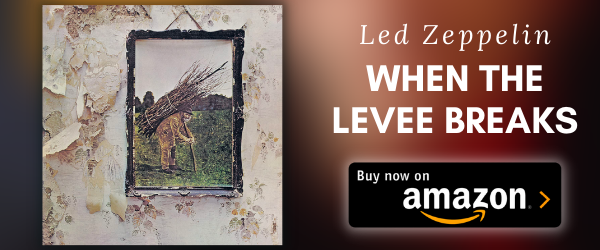In 1927, the Mississippi River flooded over 27,000 square miles of land under as much as 30 feet of water, killing hundreds of people and destroying towns, farms, homes, and more along the Mississippi River in Louisiana, Arkansas, Mississippi, and the Mississippi Delta.
Videos by American Songwriter
Considered the most destructive river flooding in U.S. history, two years later “The Great Flood of 1927” inspired Mississippi natives, Kansas Joe McCoy and Memphis Minnie, to write and record “When the Levee Breaks” in 1929.
A common theme among the bluesmen of the Mississippi Delta, life along the levees often made its way into songs of the era with Lonnie Johnson’s “Broken Levee Blues” in 1928 and Charlie Patton’s 1929 song “High Water Everywhere” also inspired by the 1927 flood.
In the lyrics for the McCoy and Minnie version of “When the Levee Breaks,” the narrator expresses his concern about the aftermath of such a catastrophe and the loss of his love and home if they wash away.
If it keeps on rainin’ levee’s goin’ to break
If it keeps on rainin’ levee’s goin’ to break
And the water gonna come in, we’ll have no place to stay
Well all last night I sat on the levee and moan
Well all last night I sat on the levee and moan
Thinkin’ ’bout my baby and my happy home
The song continued to be the main, first-person account of the deadly flood many decades later. Nearly 44 years after the 1927 flood, Led Zeppelin revisited the old story, recording their own version for their untitled 1971 album (Led Zeppelin IV).
Already heavily influenced by blues—with previous covers like Willie Dixon’s “Lemon Song,” based on a 1964 Howlin’ Wolf track “Killing Floor“ and the band’s 1982 cover of Robert Johnson “Travelling Riverside Blues”—and specifically the delta bluesmen, “When the Levee Breaks” was a natural addition to the band’s catalog.

Recorded at Headley Grange in 1970, Led Zeppelin took the blues classic, capturing the heaviness of the subject matter in their seven-plus minute track and through more eery harmonica and John Bonham’s dense drums, which he played in the stairwell of the home studio, a former poorhouse in Hampshire, England.
Retaining the essence of the original storyline, Jimmy Page and John Paul Jones kept their guitar and bass lines, respectively, in place to the McCoy and Minnie version, while Robert Plant kept many of the original lyrics with some switches throughout.
If it keeps on rainin’, levee’s goin’ to break
If it keeps on rainin’, levee’s goin’ to break
When the levee breaks, I’ll have no place to stayMean old levee taught me to weep and moan, Lord
Mean old levee taught me to weep and moan
It’s got what it takes to make a mountain man leave his home
Don’t it make you feel bad
When you’re tryin’ to find your way home
You don’t know which way to go?
If you’re goin’ down south
They got no work to do
If you’re going down to Chicago
Upon its release, Led Zeppelin’s “When the Levee Breaks” was another hit for the band, and a song many musicians have tried to recreate, through Bonham’s drums and the weightiness of the track.
Bob Dylan included his own version on his 32nd album Modern Times in 2006. There’s even a funkier cover by Buckwheat Zydeco, and Gov’t Mule has often covered Zeppelin’s version live. Massive Attack, Sean Combs, Depeche Mode, Eminem, Beastie Boys, and more have also sampled the track throughout the decades.
Now 50 years since its release, “When the Levee Breaks,” remains of the biggest hits within Led Zeppelin’s catalog, and continues to remind listeners of the nearly century-old disaster.
Photo by Chris Walter/WireImage

